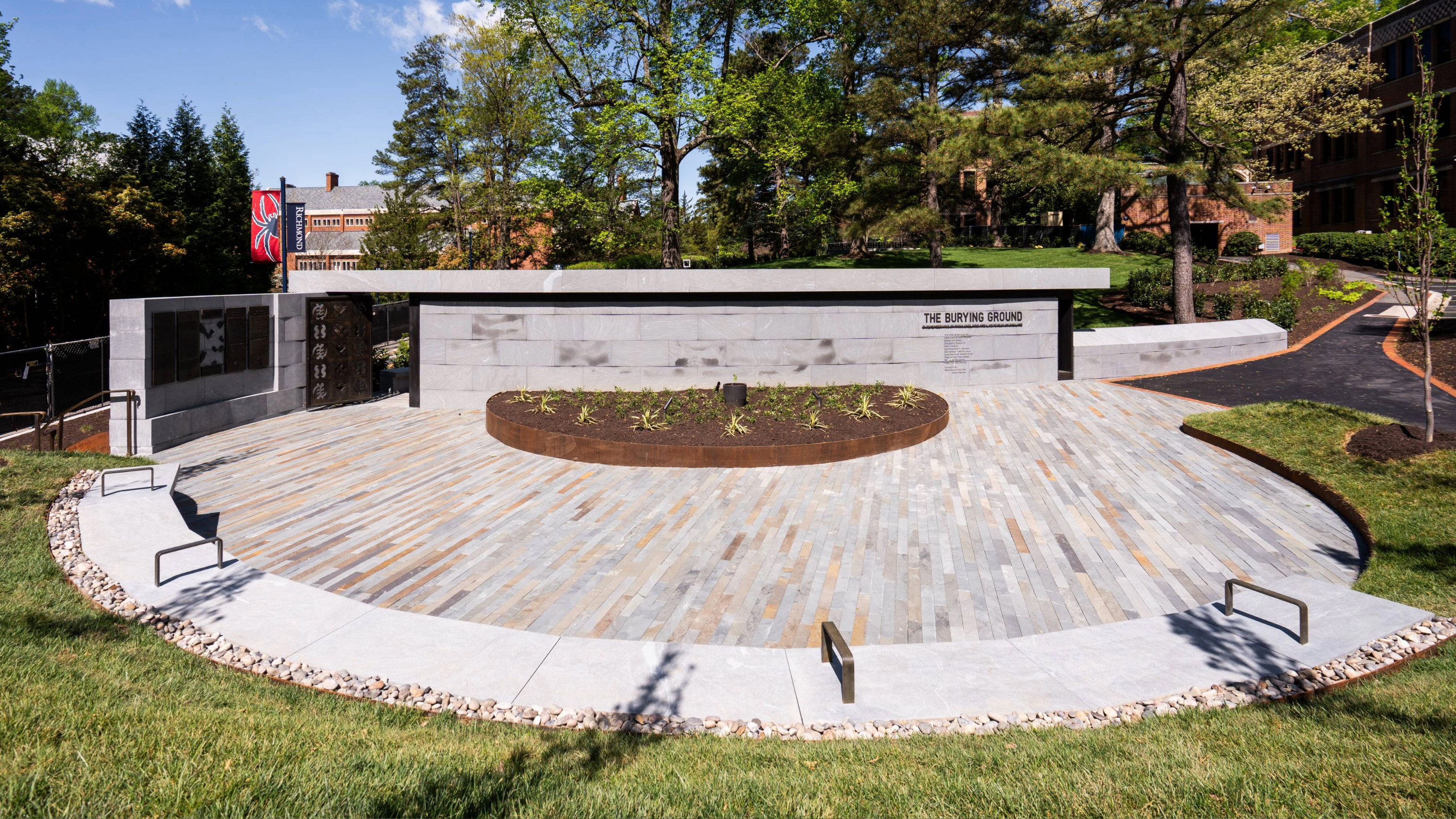Design Principles
The plan for the Burying Ground Memorial emerged from three design principles shaped by input from the descendant and University communities:
The Burying Ground site should remain sacred and lightly touched;
The Burying Ground should be unique, accessible, and inviting; and
The Burying Ground should balance sentiments of reconciliation and resilience with the certainty of an enduring struggle
Stone
Virginia Mist granite, a local material, was selected for much of the memorial structure. A short distance away from the present campus and the Burying Ground enslaved individuals labored in quarries, all part of the significant granite deposit beneath much of the surrounding land.
Symbols
Descendants of two West African peoples, the Igbo and the Akan, made up a significant portion of Virginia’s enslaved population. Symbols on the memorial bronze work are part of the Akanian Adinkra system which dates to the 18th or early 19th century.

Gye Nyame ‘Geen-YAH-May’: Supremacy of a supreme being

Sank ofa ‘SAHN-koh-fah’: Learning from the past as preparation for the future

Nkonsonkonso: Chain or a link, bonds between family, community connections

Eban ‘EH-Bae-n’: Fence, protection, safety, love
Portraiture & Poetry
Portraiture featured on the memorial’s wall is the result of collaborative efforts with descendants, artists, and stone masons. Artists collected dozens of historic family photos of Enslaved Burying Ground Descendants Council members, creating composite portraits incorporating distinctive traits. The “incomplete” nature of the portraits conveys gaps in the historical record that limit what is known about the lives of those enslaved on this land and the identities of those interred in the Burying Ground.
Artists: Marlow Jones Jr., Terry Davis, and Ryan David
The poetry incorporated into the memorial is “Tribute” by Toni Wynne and an excerpt from “When Great Trees Fall” by Maya Angelou (courtesy of Caged Bird Legacy, LLC.).
The Witness Tree
In 2022, Todd Lookingbill, professor of biology and geography, environment & sustainability, and Beth Zizzamia, GIS operations manager, determined that the white oak tree at the Burying Ground dated to c. 1812. Thus it was present at the site during at least 50 years of enslavement and possibly during the active use of the Burying Ground.
Plantings
The plantings in the memorial reflect the history of the Burying Ground and other historic African American cemeteries in the region.
These living elements include the New Witness Tree. When it was determined that the c. 1812 white oak was reaching the end of its natural life in 2023, associate director of landscape services and horticulture Alison Moyer and professor of biology and botany chair W. John Hayden led a team of students in the germination of numerous acorns, producing seedlings genetically linked to the Witness Tree. One seedling has been incorporated into the Burying Ground Memorial landscape and will grow to shade the site.
Yucca (Yucca filamentosa, 'Bright Edge') is often found in the cemeteries of enslaved people, serving as living grave markers.
Like yucca, periwinkle (Vinca minor) was also used by enslaved individuals to mark the graves of loved ones. At times, its flowers have facilitated the rediscovery of burial sites.
A laurel hedgerow (Prunus laurocerasus) provides a link to the evergreen shrubs once used to delineate African American cemeteries when the construction of protective fences was not possible.
Explore the Memorial
The memorial is open daily from dawn until dusk. Get directions, parking information, and additional details to plan your visit.
Visit








